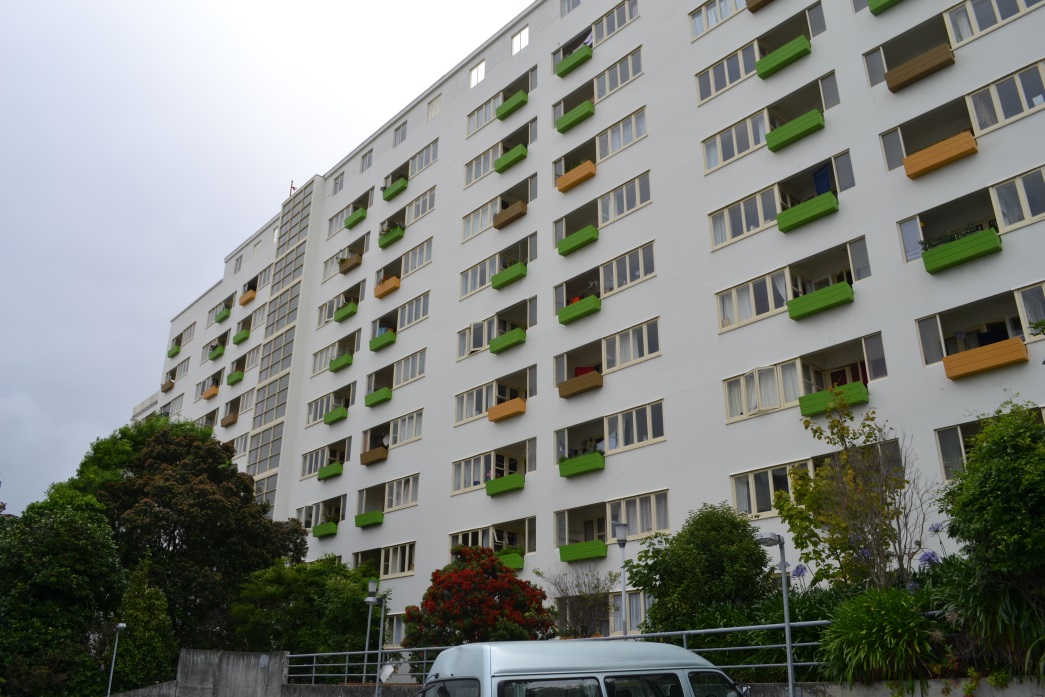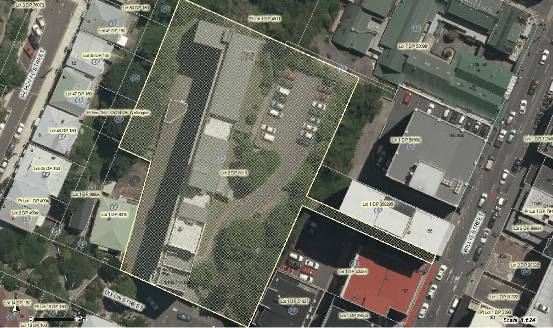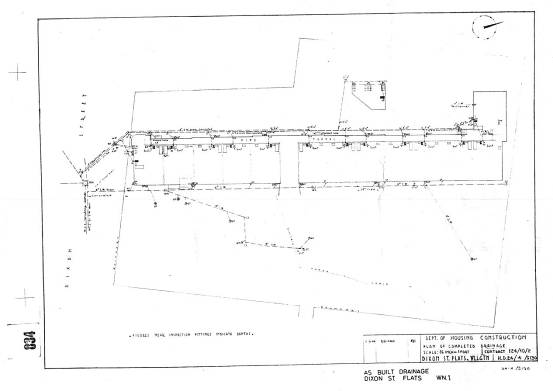Dixon Street Flats
-
Constructed
1942 - 1947
-
-
Architect(s)
-
Builder(s)
Unknown
-
The Dixon Street flats are one of the first examples in New Zealand of the International Modernist style and are a key building in the development of Modern architecture in New Zealand.
The Dixon Street flats were constructed as a part of the First Labour Governments state housing programme and they symbolise a significant period of New Zealand’s social development and history.
The Dixon Street Flats are a feature of the Wellington Central area and have attained landmark status. The project was of a magnitude unprecedented in the history of domestic architecture in New Zealand and caused considerable excitement at the time.
-
Downloadable(s)
-
close
History
-
The Dixon Street Flats in central Wellington were completed as a part of the First Labour Government’s state housing programme. The flats are considered to be the archetype of Modernist apartment blocks in New Zealand.
New Zealand has a long history of Government initiative housing schemes and when the first Labour Government was elected in 1935 it undertook an extensive housing scheme. The state housing scheme was prompted by a housing shortage during the Depression exacerbated by the decline in building construction and the movement of people into cities to look for work. Those families who already resided in the cities were often in no better position to afford the New Zealand dream home complete with quarter acre section, and the increased demand on rental properties caused rental rates to skyrocket. The Labour Government, led by Michael Joseph Savage, elected in 1935 had pledged to build houses of a modern standard and comfort. The Labour Government scheme differed greatly from earlier schemes by focussing its programme on the principle that access to decent housing was a fundamental right of all New Zealanders. Although this scheme is best known for suburban housing, 13 concrete apartment blocks were also constructed as a response to the severity of the housing shortage and the lack of labour and timber building materials caused by World War Two.
The Dixon Street Flats were the second block of apartments built by the government after the first apartments were completed in Berhampore. Apartment style living had been first introduced into New Zealand cities in the 1920s, and the Dixon Street flats marked a new era in New Zealand domestic architecture.
The building was designed for the Department of Housing Construction although the designer remains unclear. Gordon Wilson was Government architect of the day and is officially the ‘architect of record’; however noted Modernist architect Ernst Plischke was employed by the Department of Housing Construction at the time and is thought to have had a significant part in the design. The apartment block was constructed between 1941 and 1943 by the Wellington contractor J.L. Wilkins, the ten storey building was the first slab apartment block in New Zealand and contained 115 one bedroom apartments and one two bedroom caretakers unit. The apartment building was of a magnitude unprecedented in domestic architecture of the time and caused considerable excitement. The apartment block was opened, unfinished, on the 4th of September 1943, three weeks before the upcoming election. Labour won the election and the flats were completed in the following year, highlighting the Government’s progressive outlook and garnering considerable support for the political left.
By 1943 over 700 applications had been received for the 115 units, indicating the desperate shortage of housing in the city. Prior to completion, the Government had let 11 of the units to the Women’s Auxiliary Air Force and Army Corps. Upon completion, 20% (later increased to 50%) of the units were allocated to returned servicemen and their wives. The rest were reserved for the elderly, childless couples, and people who had interests other than babies and gardens. Despite the high demand, and the praise received for the apartment’s design, the building was criticised by the general public, the opposition in Government, and from the Labour party itself. The units were not designed for families and were the opposite of average New Zealander’s dream home, and many associated them with the tenements of Europe. The apartments were also unexpectedly expensive, with a single unit costing £1619, approximately £269 more than the average three bedroom state house. These factors combined to limit the number of apartment blocks erected by the Labour Government before they lost power in 1949.
The monolithic modernist Dixon Street flats, now managed by Housing New Zealand, have remained in state hands since their completion. Despite minor changes to the building and upgrades of services, it continues to serve as a landmark in New Zealand’s architectural history. The flats are a key building in the development of architecture in New Zealand and are among the first of their style in the country.
-
Modifications
close
-
1944 - 1980
-
453 Adelaide Road (Victory Flats); 493 Adelaide Road (Berhampore Flats); 134 Dixon Street (Dixon Street Flats); 302-312 The Terrace (Gordon Wilson Flats): drainage as built (00044:2:29)
-
1982
-
134 Dixon Street [158 Willis Street], retrofit flats (00044:0:240)
-
1994
-
134 Dixon Street, upgrade fire egress (00060:119:4329)
-
2009
-
134 Dixon Street, remedial works to decks and the roof (00078:3731:193308)
-
-
Occupation History
close
-
unknown
-
Not assessed
-
-
-
close
Architectural Information
-
Building Classification(s)
close
Not assessed
-
Architecture
close
The Dixon Street flats are one of the first examples in New Zealand of the International Modernist style and are a key building in the development of Modern architecture in New Zealand. The flats are the first slab apartment building constructed in New Zealand. The main façade of the building portray the clear lines of horizontality and the pristine imagery associated with the International style. There is little ornamentation, with the style delivering a plain, refined, functional building. The rear façade, with its solid balcony lines is even more severe. At each end of the building, the stairs are encased behind a curved wall punctuated with square windows, forming a sharp contrast to the rectilinear solidity presented by the main block.
-
Materials
close
Reinforced concrete structure
Cement render
Timber joinery
-
Setting
close
The Dixon Street flats are a significant example of Modernist architecture unique for its location and scale. The building is a prominent element of the townscape, and has become a landmark in the central city despite the construction of a number of high rise buildings that partially obscure it.
-
Building Classification(s)
close
-
close
Cultural Value
The Dixon Street flats are one of the first examples in New Zealand of the International Modernist style and are a key building in the development of Modern architecture in New Zealand.
The Dixon Street flats were constructed as a part of the First Labour Governments state housing programme and they symbolise a significant period of New Zealand’s social development and history.
The Dixon Street Flats are a feature of the Wellington Central area and have attained landmark status. The project was of a magnitude unprecedented in the history of domestic architecture in New Zealand and caused considerable excitement at the time.
-
Aesthetic Value
close
-
Architectural
Does the item have architectural or artistic value for characteristics that may include its design, style, era, form, scale, materials, colour, texture, patina of age, quality of space, craftsmanship, smells, and sounds?
The Dixon Street flats are one of the first examples in New Zealand of the International Modernist style and are a key building in the development of Modern architecture in New Zealand. The Dixon Street Flats are considered to be the archetype of Modernist era apartment blocks in New Zealand. Built in load bearing, reinforced concrete, these flats mark a new era of domestic architecture in New Zealand and were a project of a magnitude unprecedented in the history of New Zealand domestic architecture.
-
Townscape
Does the item have townscape value for the part it plays in defining a space or street; providing visual interest; its role as a landmark; or the contribution it makes to the character and sense of place of Wellington?
The Dixon Street flats have considerable townscape value as the building is a prominent element of the townscape, and has become a landmark in the central city.
-
-
Historic Value
close
-
Association
Is the item associated with an important person, group, or organisation?
The Dixon Street flats were constructed as a part of the First Labour Governments state housing programme and they symbolise a significant period of New Zealand’s social development and history. They highlight the Government’s realisation that there was a need to cater to a number of diverse social groups with its housing program, not just those looking for the suburban lifestyle seen elsewhere in the state housing program.
-
-
Scientific Value
close
-
Archaeological
Does the item have archaeological value for its ability to provide scientific information about past human activity?
The flats are part of the NZAA Central City Archaeological Area R27/270 – risk of accidental discovery is unknown.
-
Educational
Does the item have educational value for what it can demonstrate about aspects of the past?
The flats have significant educational value as an important representative of the social history of New Zealand. They provide an important insight into the attitudes that were held around the home and family and the changing views following World War Two.
-
Technological
Does the item have technological value for its innovative or important construction methods or use of materials?
The Dixon Street Flats were the first slab apartment block constructed in New Zealand. There is technical value in the design and construction.
-
-
Social Value
close
-
Public Esteem
Is the item held in high public esteem?
The Dixon Street Flats are a feature of the Wellington Central area and have attained landmark status. The project was of a magnitude unprecedented in the history of domestic architecture in New Zealand and caused considerable excitement at the time.
-
-
Level of Cultural Heritage Significance
close
-
Authentic
Does the item have authenticity or integrity because it retains significant fabric from the time of its construction or from later periods when important additions or modifications were carried out?
The flats have had few modifications since the time of their construction. Some upgrading and repairs have been carried out to address leaks on the roof and windows were added to the lower level balconies to stop people entering the flats without authorisation.
-
Local Regional National International
Is the item important for any of the above characteristics at a local, regional, national, or international level?
The Dixon Street flats are of local significance for the contribution that they make to the townscape and are of national architectural significance and national historic significance.
-
Rare
Is the item rare, unique, unusual, seminal, influential, or outstanding?
The Dixon Street flats are considered to be the archetype of Modernist era apartment blocks in New Zealand.
-
Representative
Is the item a good example of the class it represents?
The flats are representative of the Modernist Movement and mark a new era of domestic architecture in New Zealand.
-
-
Local / Regional / National / International Importance
close
Not assessed
-
Aesthetic Value
close
-
close
Site Detail
-
District Plan Number
17/ 101
-
Legal Description
Lot 2 DP 8016
-
Heritage New Zealand Listed
1/ 7395
-
Archaeological Site
NZAA Central City Archaeological Area R27/270
-
Current Uses
unknown
-
Former Uses
unknown
-
Has building been funded
No
-
Funding Amount
Not applicable
-
Earthquake Prone Status
Not Earthquake Prone
-
-
close
Additional Information
-
Sources
close
- O’Brien, Rebecca. ‘Dixon Street Flats – 134 Dixon Street’. Historic Places Trust unpublished registration report. 5 December 2002. Accessed 12 September 2013
- 1944-1980 453 Adelaide Road (Victory Flats); 493 Adelaide Road (Berhampore Flats); 134 Dixon Street (Dixon Street Flats); 302-312 The Terrace (Gordon Wilson Flats): drainage as built (00044:2:29)
- 1982 134 Dixon Street [158 Willis Street], retrofit flats (00044:0:240)
- 1994 134 Dixon Street, upgrade fire egress (00060:119:4329)
- 2009 134 Dixon Street, remedial works to decks and the roof (00078:3731:193308)
- Technical Documentation close
-
Footnotes
close
Not available
-
Sources
close
Last updated: 9/25/2017 8:51:56 PM




